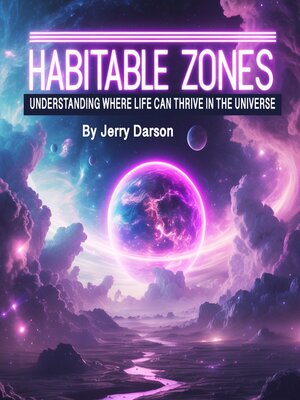Habitable Zones
audiobook (Unabridged) ∣ Understanding Where Life Can Thrive in the Universe
By Jerry Darson

Sign up to save your library
With an OverDrive account, you can save your favorite libraries for at-a-glance information about availability. Find out more about OverDrive accounts.
Find this title in Libby, the library reading app by OverDrive.



Search for a digital library with this title
Title found at these libraries:
| Library Name | Distance |
|---|---|
| Loading... |
This audiobook is narrated by a digital voice.
The concept of a habitable zone, often referred to as the "Goldilocks Zone," is central to our understanding of where life can potentially exist in the universe. A habitable zone is defined as the region around a star where the conditions are just right for liquid water to exist on a planet's surface—neither too hot nor too cold. Water, as we know it, is essential for life as we understand it, making the habitable zone a key focus in the search for extraterrestrial life.
Stars play a critical role in determining the habitable zone of any given system. The energy emitted by a star dictates the distance at which a planet must orbit to maintain conditions suitable for life. Too close to the star, and the planet's surface would become too hot, causing any water to evaporate. Too far away, and the temperatures would plummet, causing water to freeze. Therefore, the balance of stellar radiation and the planet's distance from its star are crucial factors in determining habitability.
The Goldilocks Principle extends beyond just temperature. It encapsulates the ideal conditions for life to thrive, including a stable atmosphere, an energy source (such as a star), and a planet's ability to retain liquid water. While the concept may seem simple, determining whether a planet falls within the habitable zone is complex, as it also depends on factors like the planet's atmosphere, its composition, and its orbital characteristics.







